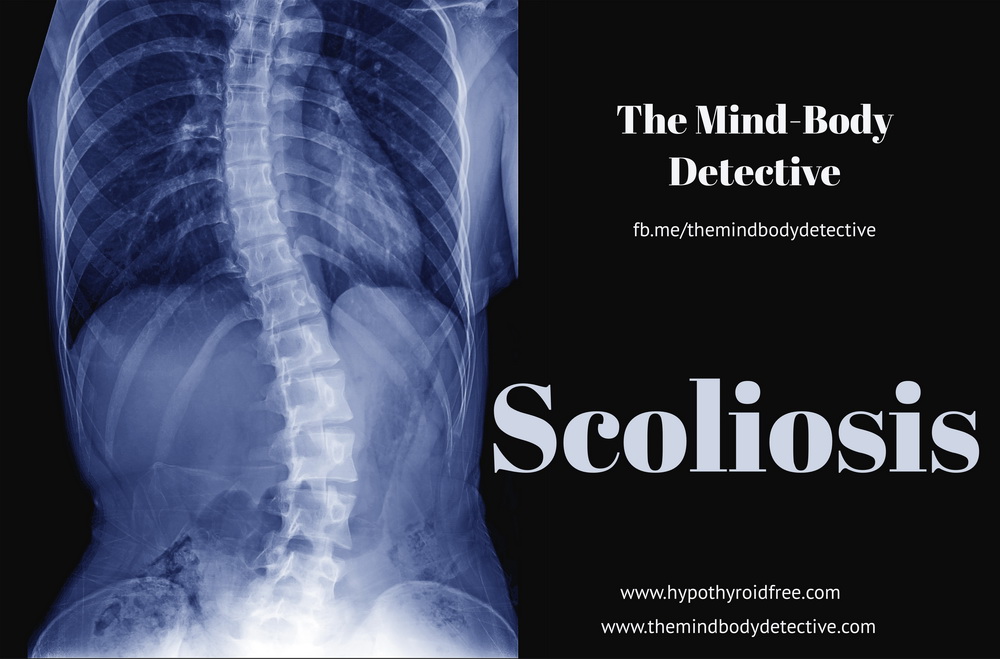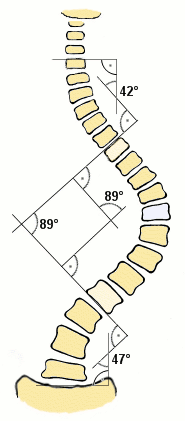
Fundamentally the skeletal system provides us with structure and stability. It is our support mechanism and also does the job of protecting our more vulnerable softer tissues and organs.
It works in cohesion with the muscular system to assist movement. Motion and progression forwards, through movement of the whole biological system, or through moving aspects of the external environment, either towards us, or farther away from us, are all aspects of motion that the muscular and skeletal system are intricately involved in.
As a mind-body detective, it is our job to decipher the messages of the body, and to understand the deeper meaning in any dysfunction of the muscular-skeletal system, in relation to the impairment of the biological function and how that relates to our thinking, our beliefs and our deeper unconscious mind.
In META-Health we know that all Muscular-Skeletal issues are associated with the cerebral medulla brain layer, which relates to issues of self-worth and self-value.
- When in stress phase, the muscular-skeletal will experience a cellular degeneration, a reduction in cellular re-generation and a weakness in the overall function of the organ or tissue. In terms of scoliosis, this is when we see the muscles and skeletal structure in stress, and the progression of the curvature.
- When in regeneration (healing) phase, the muscular-skeletal will return to a normal regeneration process and the vertebra will [in the end] regain their strength.
It is very important to address the fundamental underlying emotional and ‘core value’ aspects of scoliosis AS SOON AS POSSIBLE once it is diagnosed, in order to reduce the time that an individual is in stress phase. This is because the curvature increases for the duration of time that the individual is in ‘stress’ – and that stress, as we will see below, will be systemic and will be affected by their social group and family – and the values of that group or family.
Therefore we can see, that in order to address the core conflicts presented through scoliosis and in order to maintain and complete the regeneration phase of the spine and vertebra, this may require the inclusion of the whole family, or at the least, include the main care-giver, in order to support the individual’s healing.
The spine – it’s segments and their associations

The spine is the main structural unit that allows the individual to stand up, and to move fluidly and respond to the environment through directing where our motion will go.
The spine is divided into several moving parts, the lumbar region, the thoracic region and the cervical region. Each of these plays a role in the support of the upright nature of the individual, but also are useful for more specific functional aspects. All of these should be considered when making any mind-body analysis.
For example, the lumbar spinal region is about core values that provide stability, either through issues that are about safety for us, including home, family and our sexuality. We may be working with values here that allow us to be rooted and stable in our interactions and movements through our social environment.
The thoracic spine allows us to change direction, to twist and face another direction, even if our feet, our root has been planted to take us forwards in one way, our thoracic spine allows us to turn away from that set direction. It allows a diverse range of movement that also allows us to bend forwards. It allows us to stand still, in one position, whilst turning to face other directions, which may be about ‘searching’ or ‘looking for’ another way forwards.

When we go to move forwards with motion, it is the thoracic spine which propels our weight forwards, whilst working in tandem with the lumbar spine, which is still required to keep us stable until we have moved in the direction our thoracic spine has pre-empted for us.
The thoracic spine also protects the thoracic cavity. Its protective quality is especially important for the heart and lungs (both of which are often physically affected if the scoliosis curvature exceeds >60º).
So in META-Health, we would expect to see severe scoliosis connected to the mind-body and emotional issues of the heart and lungs, and therefore corresponding values attached to this.
Case Study 1: A young boy diagnosed with scoliosis at 14 years
- Curvature was not evident two years earlier.
- Severe curvature and ongoing curvature requiring spinal correction surgery, which the young man wished to proceed with.
- Spinal correction can correct to a degree, but will not completely straighten the curvature deviation.
- Ongoing observation will continue to be required through his skeletal growth stages even after the initial surgery.
Areas of Questioning:
- “What was happening around 12 years of age, that made this young man feel that he was not strong enough to stand up for himself, or his beliefs?”
- “Where did he not feel strong enough in himself, or his social group, to follow the set path in front of him, and where did he not feel strong enough in himself to follow the deviation or change away from that path?”
- “Where did he feel weak, or unable to protect matters of his heart, or soul?”
Conflicting Values
The young man had gone through a crisis of ‘faith’. Having been brought up as a member of the church, he was beginning to question the ideology and the belief system that he had grown up with. He was asking questions which did not get answered or satisfy his inner intellect or his emerging inner values. However, the church was a large part of his social environment, and he felt that it was massively important in terms of values – especially for his mother. This created a conflict of values – both within his own beliefs and created a conflict with his main parental support (his mother).
There was a period of time that he felt angry towards his mother, and felt that he must defend his position and argue with her constantly. Particularly angry with her blind and illogical faith.
He left the church and was searching for ‘another way’ – watching you tubers, and searching for other views and ideals that might resonate with his own values.
We can see that this conflict resulted in him feeling
- unsupported within his traditional social environment (of the church)
- trying to search for or look for a ‘new’ place in society, or a new social group
- either feeling unsupported by his primary support/carer (his mother), or feeling unable to request the support he needed from his mother
- vulnerable and weak, not knowing where or how he could express his inner values.
- unsure of his stance in relation to his existing social structure, unable to move forwards on the same path, and searching for an alternative
- looking to find how could he express his own core values, but unsure and not feeling good enough or strong enough to stand up for his own beliefs and values?
Case Study 2: A young girl, 11 years old
- Moderate Curvature progressing over growth period (11yrs – 20yrs)
- First requires bracing to support the spine
- Spinal Correction later required
Areas of Questioning:
- “What was happening from11 years of age, that made you feel that you were not strong enough to stand up for yourself, or your beliefs?”
- “Where did you not feel strong enough in yourself, or your social group, to follow the set path in front of you, and where did you not feel strong enough in yourself to follow the deviation or change away from that path?”
- “Where did you feel weak, or unable to protect matters of your heart, or soul?”
Unfair expectations
The young girl had experienced long-term devaluation as the only daughter in her family. She watched her parents support and encourage her brother in all the activities that he desired. In contrast, she was put last, and her desires were considered less important than her brothers. In addition she was expected to cook and clean up after her brother (and often times her parents, who both worked), and act as a dutiful and obedient daughter/sister/female.
She was often angry at how she was treated, and felt that she was treated unfairly. Whenever she tried to stand up for herself, or defend or define her position, she was put down, and when her frustration became expressed as an emotional upset, or outburst, she was continually ‘put down’ by her family as her being “difficult”, or an “emotional girl”. She often heard her mother telling herself or others that “girls are difficult” or “girls are a pain” finishing with “give me a boy anyway!”
She felt that she was also continually compared as ‘not as good’ as her brother, which was profoundly heart-breaking to her. She also felt completely unsupported by her primary carer (her mother), whom she felt should have been able to understand her position – both as a mother and as a woman.
In addition, this ongoing family situation was an affront on her deeply held core values, as she fundamentally believed that her desires and needs were at least as important as her brothers! She questioned the family value that a “boy was more important” or “better” than a girl, and did not believe that a girl should inherently just be ‘good’ and ‘quiet’ and adopt the position of the subservient care-giver to the rest of her ‘superiors’, who seemed to be everyone else in the family!
Throughout her growing adolescence these conflicting values (between her own values of self-worth, and what it means to be a female) were conflicted with those of her family and were faced again and again in multiple daily situations, because as a minor, her family and social environment was an area that she could never escape.
Mind-Body Solutions & Conclusions
When we are working with scoliosis, there is a significant difference to working with physical issues or medical diagnoses that affect only one or two of the vertebra, in that we are looking for an overriding issue that will be affecting the person systemically. Therefore, we may see multiple ‘values’ being implicated, or questioned, but they will be connected via a single issue of the heart, or the soul. Making scoliosis a deep core value conflict, that is affecting how the individual can both ‘stand up’ for their own beliefs and values, and ‘move forwards’ or progress upon their own path, which may appear to be significantly different to the ‘orthodox’ or standard path they encounter in their existing primary social group(s).
 Working with a Meta Health Practitioner, and focusing on uncovering the root causes, and therefore the conflicted core values that are specific and unique to the individual suffering with scoliosis, is a non-invasive, non-physical intervention that may be worth considering as part of an ongoing and wholistic approach to any healing plan. Along with addressing any past traumas, experiences or events that have contributed to the ongoing emotional and physiological conflicts, a trained practitioner can work with the individual child, or adolescent, along with a family orientated approach, that provides an overall awareness of the key issues that are causing stress, and helping to implement strategies that recognise when stress is occurring, and how to minimise it on a daily basis. They can also help to clear and heal past emotions and beliefs that may be keeping the individual from ‘moving on’ in their life.
Working with a Meta Health Practitioner, and focusing on uncovering the root causes, and therefore the conflicted core values that are specific and unique to the individual suffering with scoliosis, is a non-invasive, non-physical intervention that may be worth considering as part of an ongoing and wholistic approach to any healing plan. Along with addressing any past traumas, experiences or events that have contributed to the ongoing emotional and physiological conflicts, a trained practitioner can work with the individual child, or adolescent, along with a family orientated approach, that provides an overall awareness of the key issues that are causing stress, and helping to implement strategies that recognise when stress is occurring, and how to minimise it on a daily basis. They can also help to clear and heal past emotions and beliefs that may be keeping the individual from ‘moving on’ in their life.
Individual Strategies
In the situation of the young man (case study 1), he has gone on to explore and to develop his own understanding of his individual strong core values. He now recognises these as being significantly different to those of many people in his social groups – no longer defined in terms of a spiritual belief system, but in a deeper understanding of his own values and beliefs on multiple levels.
He has grown through a period of years, and recognises that whilst he once did not feel strong enough to verbally express his inner opinions, for fear of how ‘different’ they were to his peers and indeed even to the majority of society, he is now a strong member of the debating team in his college, and often finds himself in the position of defending alien or unusual political or social views, in the face of greater opposition.
In this sense, we see that he has been on a journey to not only search out and find his own core values (albeit that they may be different to the greater mass of the population), but he has also had to find ways to explore how he might be able to stand up and express them to the wider social group. This he has explored and developed through his life at college. He has developed strategies that involve cognitive reason and highly intelligent functioning skills, which he has developed over the several years since he left his old social structure of the church.
He now expresses clear and powerful positions within his debates and hypothesis arguments that are informed by scientific and logical thinking that does not necessarily adopt or accept the ‘status quo’ of conventional thinking.
In the case of scoliosis, when the cause of the dysfunctional weakness is addressed, it is unlikely that the spine will re-straighten, but it is likely that the ‘weakness’ of the vertebra caused by the conflict stress will be addressed and reversed and we would expect to see the curvature deviation therefore halt and stabilise.
This means that the condition should not continue to cause pain or weakness. Currently, in this case study, his scoliosis is stable and he has no pain.
In the case of the young girl (case study 2) she has not found alternative solutions to her core conflicts. However, her social situation is now changed, as she no longer lives at home. This means that her stress is now much reduced proportional with the reduction in her daily interaction with family.
She has received medical intervention in the form of spinal surgery and metal rods which support her spine.
Occasionally she still has pain and movement of the spine. For this reason she is taking pain medications ongoing.
For the young girl, the core conflicts were not fully addressed, but were ‘lessened’ by removing herself from the social environment in which she was constantly ‘retriggered’ by external factors. Her conflict around being treated and valued equally – as a female, has not found a deep resolution. She may well retain ongoing emotional conflicts that are raised when she has contact with family members. Past hurts may still exist as part of that ‘wounded child’ that originally experienced them.
Full healing may only be possible when these old wounds are faced and addressed at a deeper level.
Final Thoughts
For me, as a practitioner, the difference between the two cases highlights the importance of addressing the underlying conflict which is connected to the root cause. For me, Meta Health is an essential component in being able to do this effectively. For whilst we can integrate surgical and allopathic methods in management of the condition, it has been my experience that we really can alleviate ongoing pain and degeneration by finding lasting solutions to the underlying core conflicts.
This article is an abbreviated version of the work published on Hypothyroid-Free
Study the methodology of healing!
pictures: Deborah Wiggins-Hay,
https://en.wikipedia.org/wiki/Scoliosis#/media/File:Scoliosis_cobb.gif
lib.rus.ec
 META-Healthy Life articles are created by professionals and friends of META-Health International CIC, supporting individual and global health by deepening and sharing our understanding of how resilience and well-being are achieved.
META-Healthy Life articles are created by professionals and friends of META-Health International CIC, supporting individual and global health by deepening and sharing our understanding of how resilience and well-being are achieved.